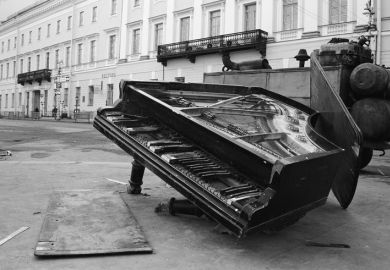This year is Mozart Year. And it is fitting that this book, Stanley Sadie's last work, should be published in the 250th anniversary of the great composer's death, for Sadie did Mozart great service in his long and distinguished career as a music editor for The Times , editor of The Musical Times and of the two most recent editions of the New Grove Dictionary of Music and Musicians .
He never ceased to be amazed by the composer, and that fascination shows on every page of this book, which covers the first 25 years of Mozart's life, up to the composition of the first version of Idomeneo in 1781. The readable and accessible text introduces a vast range of detail sensitively and sensibly, with due weight accorded to the material and its possible interpretations.
The book absorbs the wealth of study undertaken by dozens of Mozart specialists in recent decades in a manner that is difficult to imagine taking shape in the mind of just one man. Recent advances include discoveries of new source materials, rediscovery of those once thought lost (a huge treasure-trove of autograph manuscripts has been once again made accessible to Mozart scholars since the early 1980s in the Jagiellonian Library in Kraków, Poland), revisions to chronologies in successive editions of the Köchel catalogue and rethinking of Mozart's compositional processes - all of this is drawn together in a context that highlights the remarkably cosmopolitan experiences of the young boy who travelled the length and breadth of musical Europe in his first decade. These experiences coloured his growth as perhaps the greatest musical genius of his time.
The general reader will be relieved at the commonsense approach to this huge task, in which works are related to events in the composer's life. A broad picture emerges of the environments in which a composer pursued a career in the later 18th century, including entertaining and absorbing detail on Mozart's relationships with his various employers, fellow composers and dilettantes.
Something of the maturity with which Sadie approached his source materials occasionally emerges from what he does not say. For instance, he gives us a balanced account of Mozart's relations with the Mannheim theorist and composer Johann Georg Vogler, explaining that although Mozart thought Vogler performed (at sight) his C major piano concerto, K.246, too quickly for comfort, Vogler was, as Sadie puts it, "keen to know Mozart better and to play his music". That is a humane and balanced perspective one never sees in Mozartians' treatment of Vogler; normally, commentators (myself included) rubbish Vogler at length, quoting from a letter Mozart wrote to his father about the Kapellmeister 's execrable sight-reading.
Sadie's economy of expression in this case must have been dictated partly by the fact that there is little space in an account such as this to linger over details at the expense of the broader picture. Instead, in these pages, Sadie gives us an insight into Mozart's developing relationship with key figures at the Mannheim court, including the orchestra director Christian Cannabich, to whose daughter Rosa Mozart taught the piano sonata in C, K.309, carefully instructing her in the niceties of expressive keyboard playing.
Sadie's treatment of the music he knew so intimately avoids overly complicated analytical exegesis. One passage among many that takes us beneath the music's skin, while retaining our sense of wonder at the magic of it all, describes the double piano concerto in E flat, K.365 (1779):
"K.365 uses many of the dialogue devices of the string work (an incomplete triple concerto for violin, viola and cello, K.Anh. 104/320a), but it conforms more closely to the standard formal pattern that Mozart was now using for his piano concertos, with the soloists' initial entry echoing the orchestral opening. But most of the ideas, unlike those in the single piano concertos, depend for their meaning on the concept of statement and response, so that when one piano plays a phrase the other usually has an immediate answering one, which may seem to cap the argument, or to pursue it, or to turn it in a new direction."
Such elegance of expression, combined with unfussy exposition of detail, recurs throughout the book, which culminates with a gorgeous treatment of Idomeneo , full of vital detail on the painstaking evolution of the libretto and its music. Mozart wrote a series of letters to his father about the process, which shed light on how he reacted musically to a text, what kind of imagery worked well in a musical context and what did not and, above all, the sensitive adaptation of vocal lines to the peculiarities of the singers' voices. All that is covered with aplomb.
Opera was perhaps Mozart's crowning achievement, and it was one of Sadie's great loves, too. It is tragic that he did not live to pursue this through to the end. We will never have his account of the great trio of operas buffa, Figaro , Don Giovanni and Cosí fan Tutte . Fortunately, we have the first half of the picture to savour throughout Mozart Year and beyond.
John Irving is reader in historical musicology, Bristol University.
Mozart: The Early Years, 1756-1781
Author - Stanley Sadie
Publisher - Oxford University Press
Pages - 644
Price - £25.00
ISBN - 0 19 816529 3
Register to continue
Why register?
- Registration is free and only takes a moment
- Once registered, you can read 3 articles a month
- Sign up for our newsletter
Subscribe
Or subscribe for unlimited access to:
- Unlimited access to news, views, insights & reviews
- Digital editions
- Digital access to THE’s university and college rankings analysis
Already registered or a current subscriber? Login



